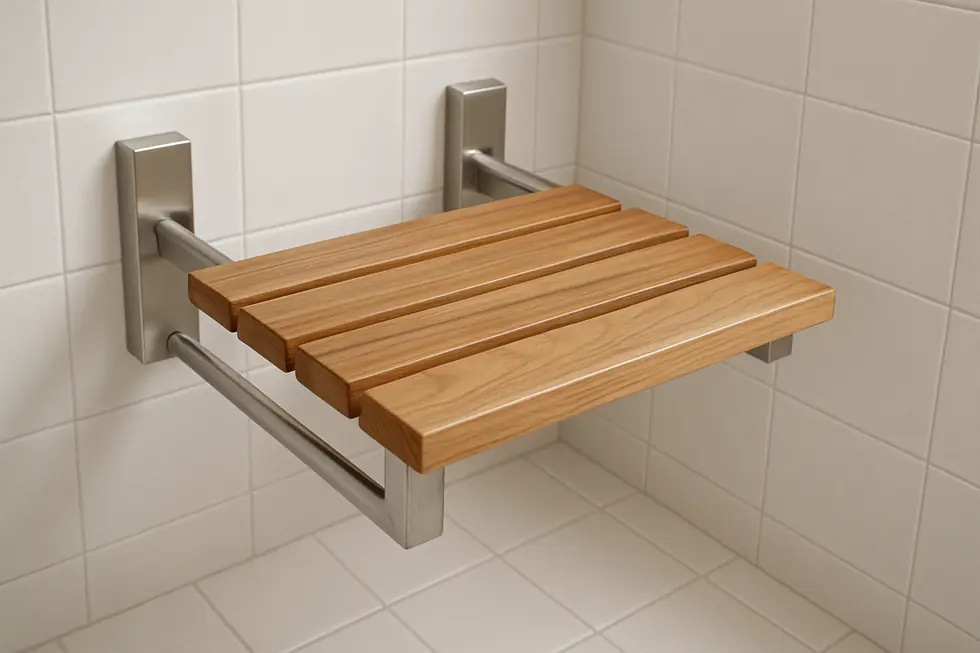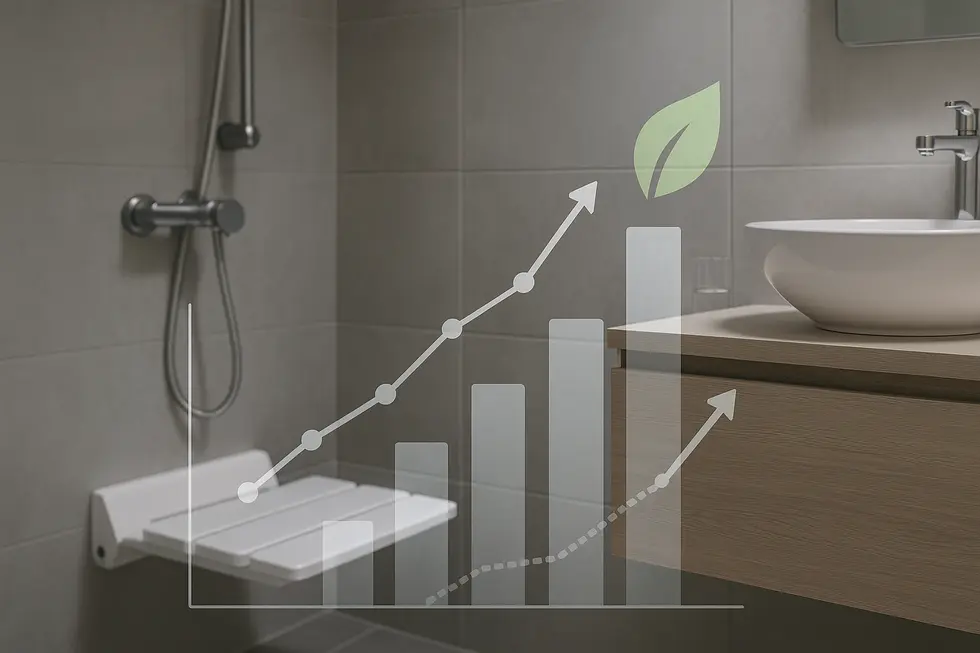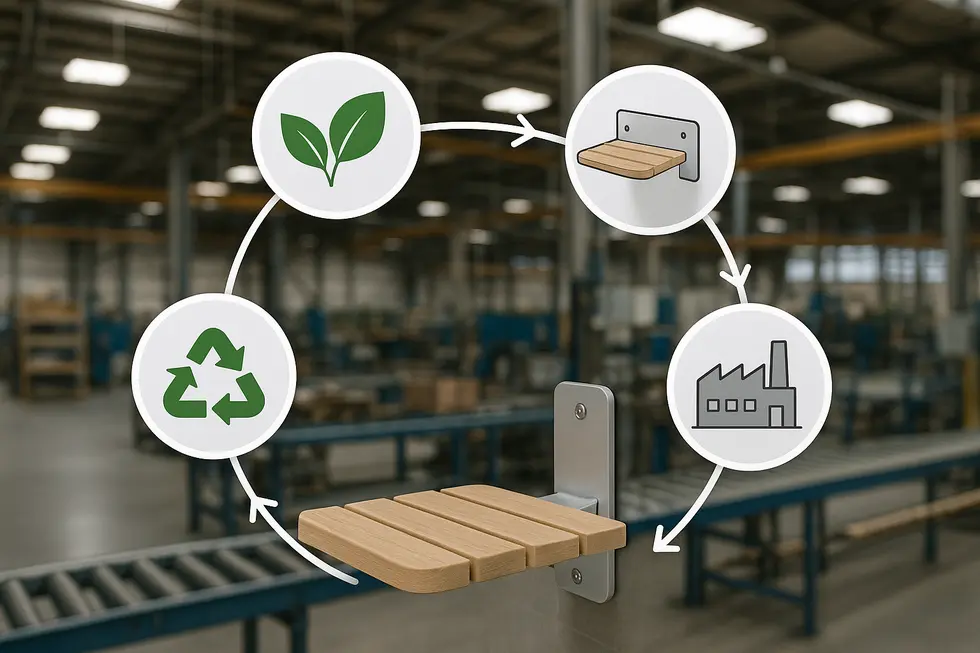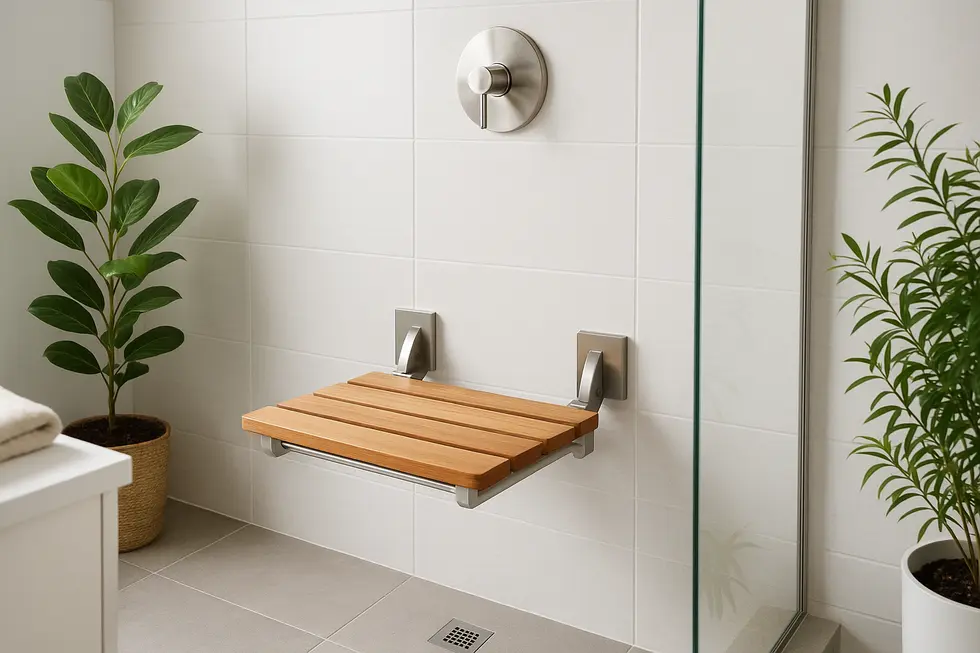Shower Seat
Sustainable Shower Seating: Innovative Design for Every Family
Sustainable wall mounted shower seats represent a smart solution for modern family bathrooms, combining eco-friendly materials and innovative design with practical benefits like space-saving and safety. This article delves into the eco-design strategies enhancing their functionality, analyzes market dynamics shaping their evolution, and examines lifecycle and regulatory frameworks that ensure sustainability and accessibility. Discover how each of these aspects intertwines to create a shower seat that’s not only good for your family but also for the planet.
From Forest to Fixture: Materials and Eco-Design Choices That Make a Wall-Mounted Shower Seat Truly Sustainable

The environmental story of a wall-mounted shower seat starts long before it swings down inside the stall. It begins in the choice of materials that regenerate or recycle gracefully, paired with design decisions that help those materials perform for decades in a humid, soap-laden microclimate.
Bamboo has emerged as a hero substrate. Harvested in three to five-year cycles, it regenerates almost as fast as it is used, and once laminated it rivals hardwood for strength. A low-VOC marine sealer locks out moisture while preserving the plant’s warm grain, so users experience spa-level aesthetics without encouraging tropical deforestation. White oak, particularly when reclaimed from barns or wine barrels, offers a similar narrative of renewal; its dense tyloses close off pores, giving the wood a built-in resistance to water and decay.
Metals do the heavy lifting behind the scenes. Aluminum alloy 6061-T6 delivers a high strength-to-weight ratio, allowing brackets to hold 350–800 lb while adding less embodied carbon than heavier steel. When the alloy is sourced from mills running on hydroelectric power and contains post-consumer scrap, its footprint shrinks further. Designers often pair that frame with a phenolic resin top: a non-porous, silver-ion-infused surface that sheds biofilm and earns infection-control points in healthcare settings.
Eco-design ties these ingredients together. Slotted seat profiles let rinse water escape within seconds, starving mildew of standing moisture. Fold-up mechanisms reduce floor projection to under 100 mm, improving bathroom circulation and extending usable life by protecting the seat from accidental kicks. Hardware is modular; a damaged slat or hinge can be swapped instead of landfilling the entire assembly, a principle aligned with emerging right-to-repair policies. Even installation influences sustainability: anchoring into 16-inch on-center blocking spreads load efficiently, so lighter brackets suffice—see our guide on the importance of solid backing when
installing a wall-mounted shower seat.
When these strategies converge, the result is a seat that lasts twenty years, survives multiple remodels, and returns to the resource loop through composting of wood and recycling of metal—proof that comfort and conservation can share the same shower.
Further reading on bamboo’s rapid renewability can be found at Build With Bamboo.
From Demographics to Dollars: How Sustainability Is Reshaping the Wall-Mounted Shower Seat Market

The wall-mounted shower seat has left the niche of clinical equipment and entered mainstream bathroom planning. Two forces drive this shift. First, ageing societies: by 2030 one in six North Americans will be over 65, a cohort determined to age in place rather than move to care facilities. Second, the rapid greening of consumer preferences, where recycled steel and fast-renewable bamboo now rank alongside chrome and plastic on specification sheets.
These forces intersect in procurement offices. Group purchasing organisations on the U.S. West Coast award extra points for seats built from 60 % recycled stainless and Forest Stewardship-certified wood, tipping contracts worth thousands of units. The commercial segment—hospitals, senior living and boutique hotels—sets the tone, demanding 800-lb ratings, third-party load certificates and published life-cycle data. Once architects list a model in an electronic spec, residential remodelers follow, seeking the same assurances for private homes.
Price signals confirm the trend. Entry-level plastic fold-ups still sell for under USD 100, yet their share shrinks each quarter while mid-tier teak or phenolic models—USD 275–650—post double-digit volume growth. Tariffs on virgin stainless steel have nudged manufacturers toward higher recycled content, which not only lowers embodied carbon but also stabilises raw-material costs. Repairable designs with replaceable slats further improve total cost of ownership, an argument that resonates with facility managers fighting tight maintenance budgets.
Innovation now targets personalisation rather than basic function. Designers specify colour-matched phenolic tops, concealed fixings and optional smart sensors that record use patterns for tele-care platforms. Even mainstream DIY customers consult online calculators to verify wall blocking before ordering, often landing on a folding wall-mounted shower seat guide that simplifies selection.
Analysts forecast a 7 % compound annual growth rate for bathroom assist devices, taking the U.S. segment alone to USD 1.65 billion by 2025. Sustainable seats will likely outperform that figure because they sit at the crossroads of accessibility mandates, environmental policy and wellness design. In other words, what began as a safety accessory has become a bellwether product for the circular bathroom economy. (Source: US Bathroom & Toilet Assist Devices Market report)
From Forest to Fixture: How Lifecycles, Supply Chains, and Codes Shape a Sustainable Wall-Mounted Shower Seat

A wall-mounted shower seat only becomes truly sustainable when every phase—sourcing, production, use, and retirement—works in harmony. The journey starts in managed forests and scrap yards, where FSC-certified teak, fast-renewable bamboo, and high-recycled 304 stainless are selected to slash embodied carbon. Responsible suppliers document legality under the Lacey Act and EU Timber Regulation, while steel mills publish Environmental Product Declarations proving 60 % post-consumer content. This material intelligence flows into computer-controlled factories that nest parts tightly, capturing sawdust for biomass and recycling steel off-cuts. Low-VOC finishes cure in closed-loop booths, cutting solvent emissions without compromising marine-grade durability.
Designers then plan for ease of installation and eventual disassembly. Seats fold to under 100 mm, meeting ADA clear-floor rules and shipping in compact cartons that reduce freight volume. Stainless hinges use captive pins so homeowners can replace a damaged slat instead of discarding the frame, a principle soon reinforced by Right-to-Repair legislation in Washington State. For professionals, a detailed installation guide highlights the necessity of 16-inch on-center blocking and torque values that preserve warranty and load certification.
Once mounted, the seat enters a service life that can exceed two decades. Electropolished metal resists biofilm; slatted teak sheds water, keeping cleaning chemicals to a minimum. Every extra year in use avoids the emissions of manufacturing a replacement plastic chair, a fact increasingly captured in carbon footprint labels requested by West Coast procurement groups. Hospitals and senior residences, driven by ANSI A117.1 load testing and infection-control audits, now specify seats with silver-ion phenolic tops and third-party UL or Intertek stamps.
End-of-life planning closes the loop. Allen keys release the frame from the wall; stainless heads to local recycling streams with recovery rates above 90 %. Wood slats compost or upcycle into garden decking. Emerging EU eco-design rules will soon demand formal Design for Disassembly reports—regulations that the wall-mounted shower seat, with its modular bill of materials and documented traceability, is already prepared to satisfy (see UL Solutions Regulatory Update, July 2025: https://www.ul.com/resources/global-market-access-regulatory-news-update-july-2025).
Final thoughts
With the right combination of eco-design, market acumen, and lifecycle management, sustainable wall mounted shower seats are shaping the future of family bathrooms. These seats exemplify how practical design meets environmental responsibility, providing safe and accessible solutions that cater to an aging population’s needs while promoting ecological sustainability. As these trends continue, families can confidently invest in solutions that offer durability, peace of mind, and contribute positively to the planet.
Experience a new standard of clean with PEGABidet—designed for comfort, safety, and independence. Join thousands who trust us to make personal care simple and dignified. Contact us contact@pegabidet.com
About us
PEGABidet is a brand owned by L.A NEXTGEN LLC, based in California. We design intuitive, hygienic, and accessible bathroom solutions that prioritize safety, dignity, and independence. Our mission is to make personal care effortless and empowering for people at every stage of life.

